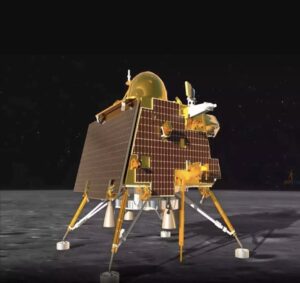CNN Central News & Network–ITDC India Epress/ITDC News Bhopal: In August 2024, the country will celebrate its first National Space Day. On August 23, 2023, at around 6 PM, the entire world, along with every Indian, held their breath. It was the moment when we all witnessed India’s giant leap in the field of space exploration. Chandrayaan-3 had successfully landed on the surface near the Moon’s South Pole at around 06:04 PM IST. There were tears in everyone’s eyes, marking the moment when India became the first country to reach the Moon’s South Pole and the fourth country to land on the Moon, after Russia, the USA, and China. India had written a new chapter in the history of space exploration. Chandrayaan-3 is India’s ambitious and fully successful lunar mission. To honor this historic achievement, Prime Minister Narendra Modi declared August 23 as “National Space Day.” Undoubtedly, Space Day will inspire students, scientists, and engineers studying in the field of science and technology in India to work in the space sector, making this day truly meaningful.

Chandrayaan-3 was launched from the Satish Dhawan Space Centre in Sriharikota on July 14, 2023, at 2:35 PM IST. The spacecraft successfully entered lunar orbit on August 5, 2023. It consists of a lander and a rover but does not have an orbiter. Previously, we witnessed the partial success of India’s second lunar mission, Chandrayaan-2, which was a highly complex mission. In science, no experiment ever fails.

On August 20, 2019, Chandrayaan-2 was successfully placed in lunar orbit. While orbiting the Moon in a 100 km polar orbit, the Vikram lander was separated from the orbiter on September 2, 2019, in preparation for landing. Later, the Vikram lander deviated from its path at a distance of 2.1 km from the surface, and ground control lost communication with the spacecraft. We were disappointed by a mere few kilometers, but the mission was not a failure because the Chandrayaan-2 orbiter continued to operate in lunar orbit. The orbiter is equipped with several scientific instruments that are functioning well. However, the experiments that were to be conducted by the Vikram lander and Pragyan rover could not be carried out. The country’s scientists did not give up, and ISRO addressed the shortcomings of the previous mission, achieving success with renewed energy.
Before this, Chandrayaan-1 was India’s first mission to the Moon. The Moon Impact Probe (MIP) of the Chandrayaan-1 orbiter landed on the lunar surface on November 14, 2008, making India the fourth country to place its flag on the Moon. The orbiter of Chandrayaan-1 discovered signs of water on the Moon. NASA’s instruments also confirmed the presence of water on the Moon. The satellite orbited the Moon more than 3,400 times, and the mission ended when communication with the spacecraft was lost on August 29, 2009. On Sunday, August 30, 2009, the Indian Space Research Organisation (ISRO) formally concluded the Chandrayaan-1 mission.







